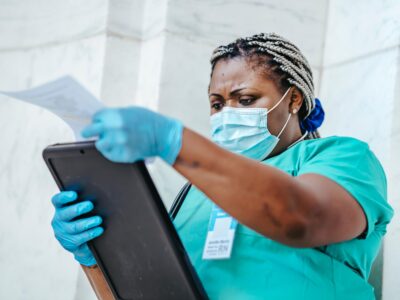Inspired by the Need to Treat Patients in Need of Organ Transplants, Oral Amphotericin B Has Become a Boon to Medicine in the Developing World, Adjunct Professor Kishor Wasan Says
Dr. Kishor Wasan, then a dean of research and a tenured professor at the Faculty of Pharmaceutical Sciences at the University of British Columbia, was leading grand rounds at Vancouver General Hospital, discussing combination therapies for treating systemic fungal infections, especially in patients waiting for transplants. A physician asked whether it was possible to develop an oral formulation of amphotericin B.
Amphotericin B was isolated from streptomycetes fungi collected from the river bed of the Orinoco River in 1955. It was developed into an antibiotic at the Squibb Institute in the 1950s. It has become an essential tool for treating fungal infections such as candidiasis, aspergillosis, coccidioidomycosis, blastomycosis, and a common but neglected global disease, leishmaniasis. The World Health Organization counts amphotericin B as one of the world’s essential medicines.
The clinical issue with amphotericin B has always been the difficulty of administration. Amphotericin B is soluble in neither water nor lipids. It is labile to the acid environment of the stomach. It had to be given intravenously, and the concentrations of the drug effective against infection approached levels causing nephrotoxicity.
The issues can be managed, with difficulty, in a modern hospital setting. But the safeguards needed for safe administration, or even the ability to give the medicine by IV were out of reach in much of the developing world, where it was needed for treating leishmaniasis as well as systemic fungal infections. The application of amphotericin in treating neglected global diseases also requires shelf stability with minimal refrigeration.
Kishor Wasan, collaborator Ellen Wasan, and other colleagues at the British Columbia Institute of Technology set about the task of creating an oral formulation of this vital antibiotic in the mid-2000s. They coordinated their efforts with those of researchers at other institutions seeking to achieve the ability to give the drug orally.To create a superstructure to coordinate and sustain these numerous research efforts, Dr. Wasan co-founded the Neglected Global Diseases Initiative at the University of British Columbia in 2010.
Against the background of a profusion of promising research, Kishor Wasan and colleagues arrived at a lipid-based self-emulsifying drug delivery system (SEDDS). Their formulation showed stability in the digestive tract and good absorption through the gut. It was more than 95 percent effective even when stored for 60 days at 43° C and only required a five-day course of treatment to achieve efficacy against leishmaniasis.
A decade of research at over a dozen institutions resulted in the answer to the question a doctor posed in grand rounds and an efficacious treatment for this previously neglected global disease afflicting over 12 million people worldwide.
Sustained, collaborative approaches result in finding new treatments for old diseases, Adjunct Professor Kishor Wasan believes. Continuity of research, Kishor Wasan says, is key to creating the medicines that underserved populations worldwide require. The Neglected Global Diseases Initiative provides a clearinghouse for funding proposals and a nexus for shared research to create the drugs that make a difference.

















